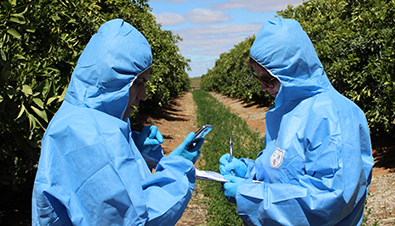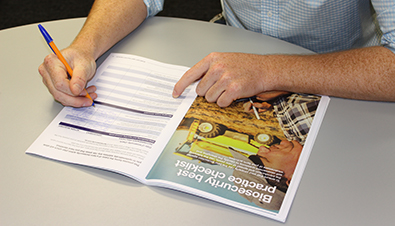Read the latest information on
Foot-and-mouth disease

Inside the State Biosecurity Operations Centre in Attwood, Victoria
Epidemic, incursion, outbreak: call it what you like, you should take note of what’s happening in Australia in response to COVID-19, because a crop or livestock pest or disease outbreak would play out quite similarly.
If you’ve not been involved in an emergency response, then there’s some useful lessons from the management of COVID-19 to take on-board.
The similarities between sectors arise because it’s the same piece of legislation, the Commonwealth’s Biosecurity Act 2015, that the Australian Government is using for coronavirus as it will use for other types of pests or diseases.
That piece of legislation, and those of the states and territories, together with the plant and animal emergency response agreements, also guide the response to crop and livestock pest or disease incursions.
In an agricultural sector emergency response, whether it’s a for disease or pest, steps to be taken are very similar. There will likely be:

Two biosecurity officers in the field prepare to do surveillance for pests and diseases
While you might expect these sorts of things to occur, it’s the effect on you and your business that might be more of a surprise.
Most obvious is the financial impact of an emergency that affects you directly. We are finding that for COVID-19, the impact is felt far beyond just the threat of the disease itself. The response has flow-on effects on the things that you value, such as your freedom, social interactions, mental health and family life, things that you might not have considered being impacted when this outbreak first began.
It’s so easy to take these things for granted, but over time they can be just as significant as the immediate damage to crops or livestock and the loss of income.
How would you or your business cope if your industry were to be hit by a pest or disease incursion or outbreak? Imagine, as for COVID-19, there is no vaccine or treatment. The only thing you can do is to defend your property.
The insights we have all gained from COVID-19 can be used to prepare yourself for future responses, so that you are not caught on the backfoot when an outbreak occurs.
Before an outbreak is the best time to implement biosecurity measures on your farm. You can put systems in place, test them out and modify your strategy as needed. You can also plan how you will respond to an emergency plant or animal pest or disease, and minimise the impact it could have on you, so you can get back to normal as soon as possible afterwards.

Don’t wait until you are caught up in an emergency
You can create your own biosecurity toolkit by going to the Profiler page, select the livestock and crops that are specific to your farm and click on ‘Save your profile’. Scroll down, and you will see the toolkit of resources from the Farm Biosecurity website that are relevant to you.
The document Preparing your business to survive an emergency animal disease outbreak lists four steps to consider.
Although it’s written for grazing enterprises in mind, the same questions are relevant to any agricultural business.
Emergency Plant Pest Response Deed
Emergency Animal Disease Response Agreement
Preparing your business to survive an emergency animal disease outbreak
Profiler (Create your own biosecurity kit)